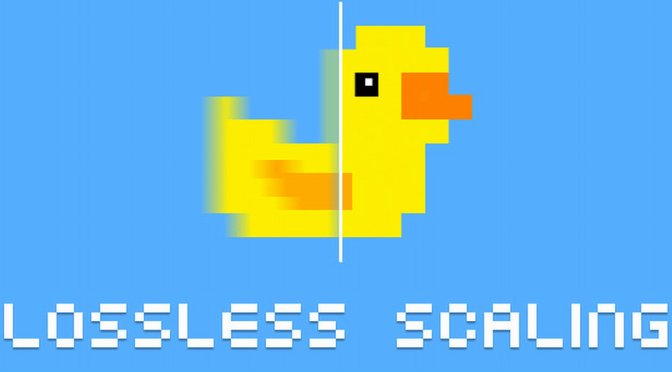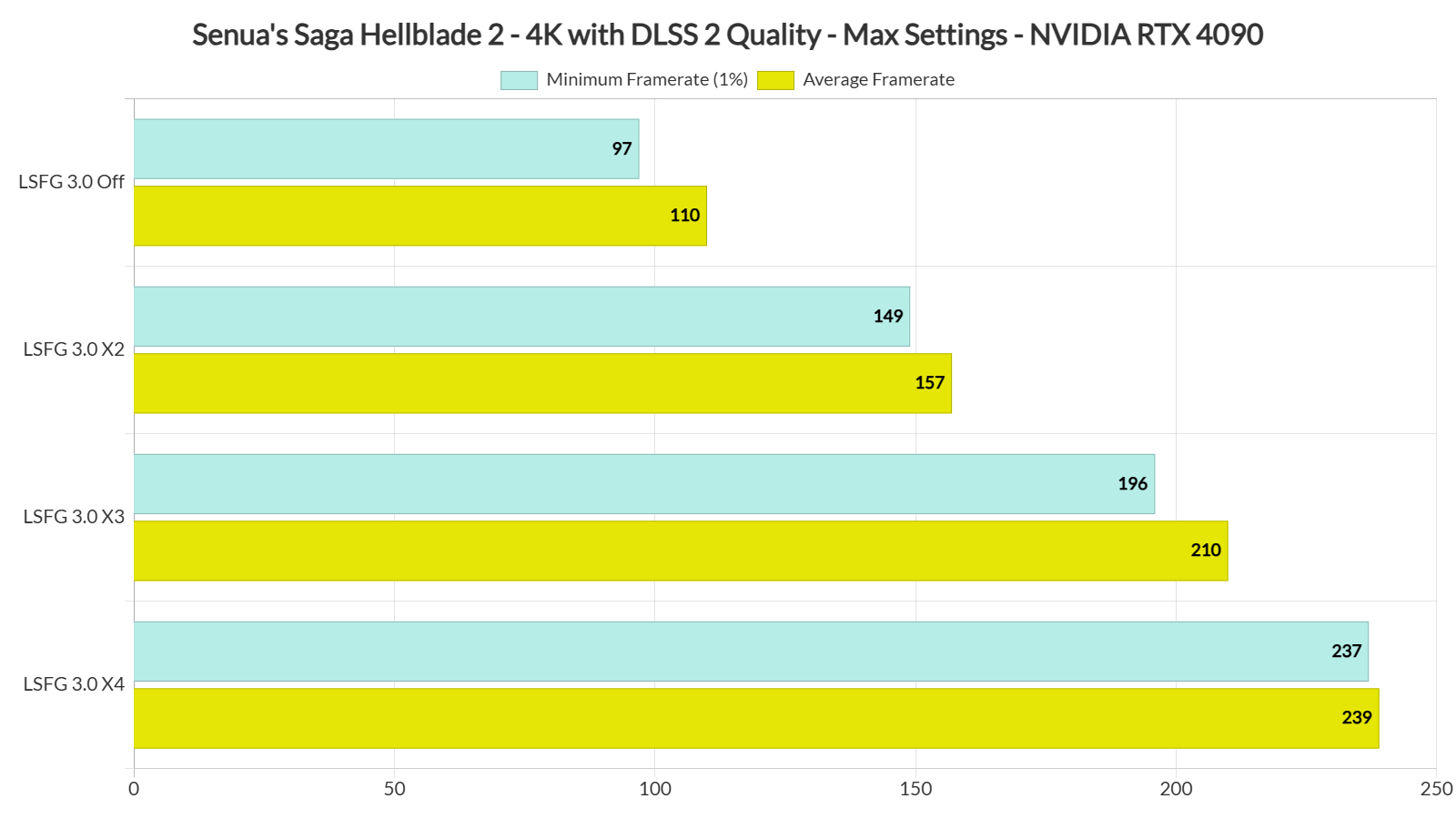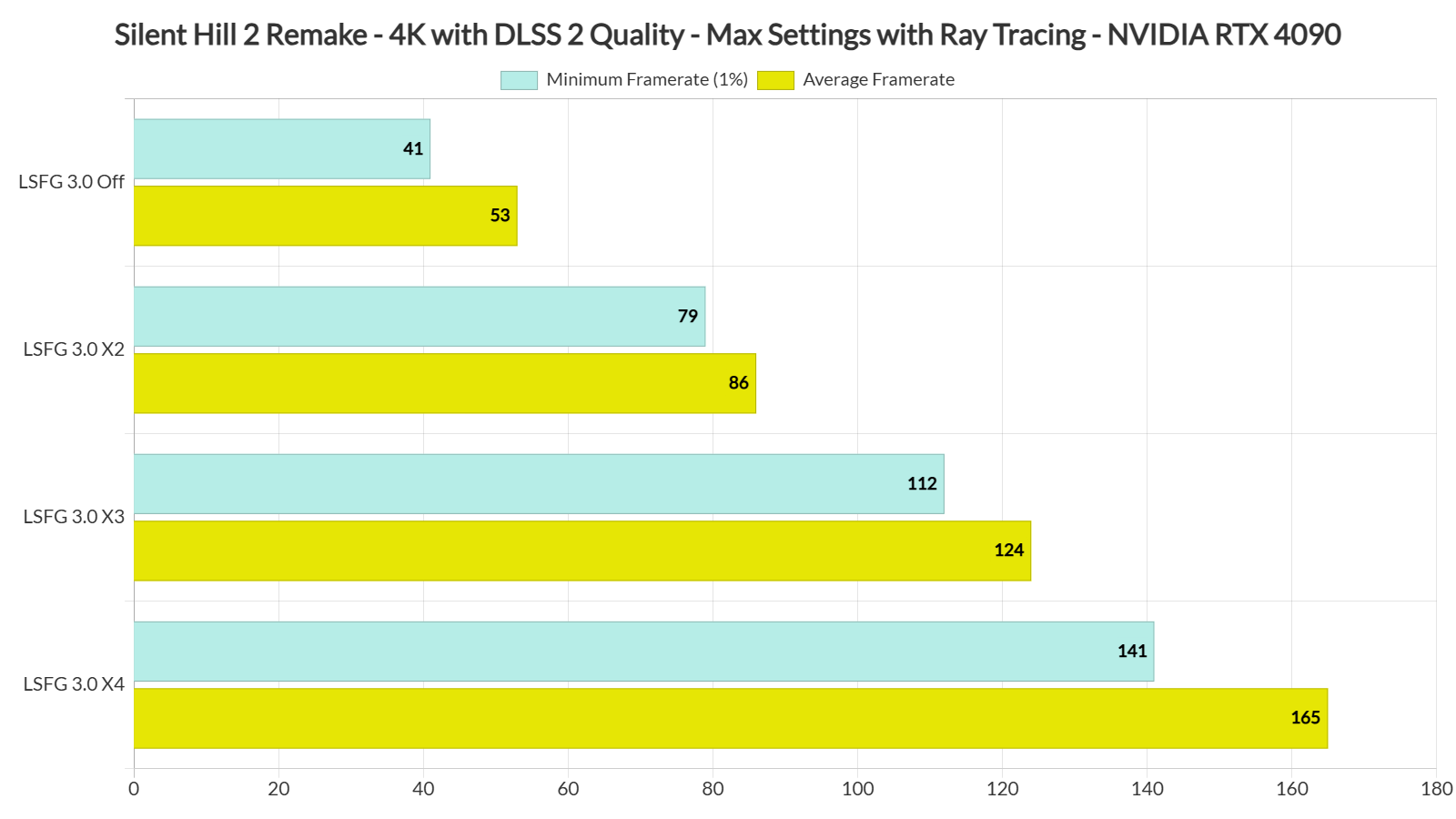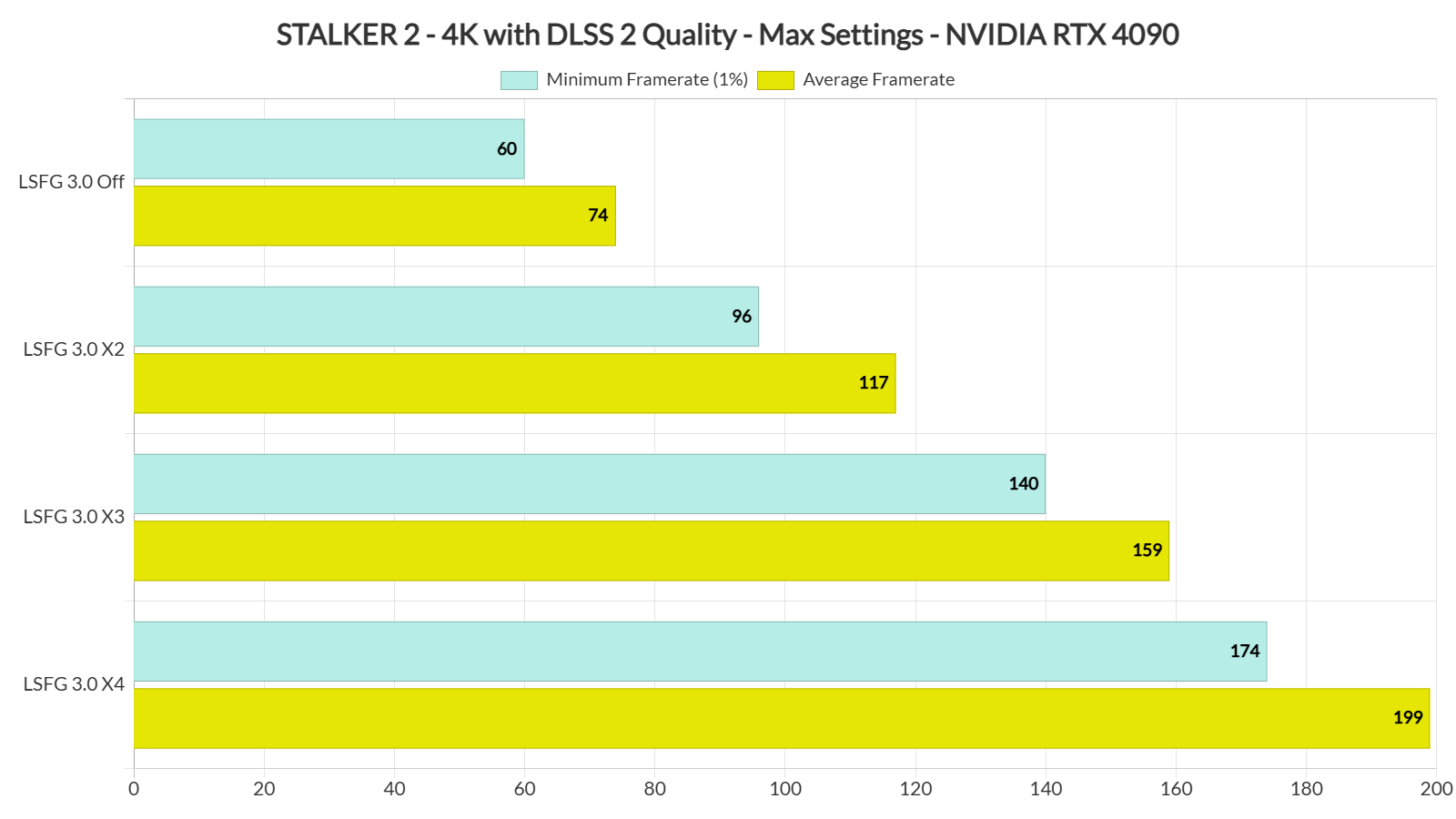THS has released a brand new version of the Lossless Scaling program. Lossless Scaling 3.0 introduces a new version of the Lossless Scaling Frame Generation. LSFG 3 is built on a new, efficient architecture that introduces significant improvements in quality, performance, and latency. It also has support for Multi Frame tech, similar to what NVIDIA introduced with DLSS 4. As such, we’ve decided to test it in a number of games, and share our thoughts.
For our tests, we used an AMD Ryzen 9 7950X3D with 32GB of DDR5 at 6000Mhz, and the NVIDIA GeForce RTX 4090. We also used Windows 10 64-bit, and the GeForce 566.14 driver. I know there is a new driver for the game. Moreover, we’ve disabled the second CCD on our 7950X3D.
The games we’ve benchmarked with Lossless Scaling 3.0 were Indiana Jones and the Great Circle, Hellblade 2, STALKER 2, Silent Hill 2 Remake and Cyberpunk 2077. All of them were maxed out (yes, with Path Tracing in the games that supported it) at 4K. We also used DLSS 2 Super Resolution Quality so that we could have a base framerate above 40FPS.
Lossless Scaling 3.0 supports Multi Frame Gen. As such, you can use Frame Generation two or three times. In concept, this is similar to what NVIDIA is doing with DLSS 4. So, let’s start with some benchmark numbers.
With LSFG 3.0 X4, the most demanding games on PC were running with over 125FPS. So yes, the tech works and it does bring framerate improvements. However, there are some issues we have to discuss.
Let’s start with Black Myth: Wukong and Hellblade 2. These third-person games had MAJOR visual artifacts and latency issues with LSFG 3.0 X3 or X4. While camera movement was smoother, they weren’t as responsive as they were with DLSS 3 Frame Generation. So, you should definitely avoid using Lossless Scaling with them. Black Myth: Wukong, in particular, feels awful with LSFG 3.0 X4. At least in my opinion.
Then we have Silent Hill 2. Silent Hill 2 suffered from both visual artifacts and frame pacing issues. This is something that really surprised me. In almost all the games I tested, LSFG 3.0 X4 introduces noticeable frame pacing/stuttering issues. In SH2 Remake they are quite noticeable, and completely eliminate the whole purpose of LSFG (which is to get a smoother camera movement). And again, DLSS 3 FG is superior to LSFG 3.0.
Indiana Jones and the Great Circle also suffers from noticeable frame pacing issues. However, it’s one of the few games that looks so smooth when using LSFG 3.0 X4. Running it at over 130FPS makes camera movement feel so smooth (well, that is when it does not stutter). Plus, this game was noticeably laggier with LSFG 3.0 X4. Indiana Jones suffered the most in our tests when it came to the additional input latency delay that LSFG can add to games. Thankfully, this isn’t a fast-paced action game. So, it would have been perfectly playable, even with that additional input delay. However, it is not due to frame pacing issues (which are not THAT noticeable when using LSFG 3.0 X2 but why should you use it when DLSS 3 FG is also available).
As for STALKER 2, it suffers from both visual artifacts and frame pacing issues. See a pattern here? Yep, all of the games we’ve tested had worse frametimes when using LSFG 3.0 X4. That’s a bummer as those frame pacing issues prevent you from taking advantage of LSFG 3.0 X3 or X4. Now contrary to the other titles, STALKER 2 was playable with LSFG 3.0 X4, despite the aforementioned issues.
Finally, the game that benefits the most from LSFG 3.0 X4 is Cyberpunk 2077. Yes, there are some visual artifacts and frame pacing issues. However, they are not as annoying as they were in all the previous games. I was able to drive vehicles and headshot my enemies with ease when using LSFG 3.0 X4. So, this is the best showcase for LSFG 3.0, at least in its current state.
Before closing, I want to make it crystal clear that LSFG 3.0 is better than LSFG 2.3. THS has managed to improve its quality. With its X2 Mode, you’ll get fewer artifacts than before. So, for games that lack official DLSS 3 support, it’s a great alternative. I was a big fan of LSFG 2.3 and I highly recommend LSFG 3.0 to pretty much everyone. Again, this recommendation is only for its X2 Mode.
All in all, Lossless Scaling 3.0 is a really cool concept. It can also give us a glimpse at what we might get on the RTX 50 series GPUs once DLSS 4 becomes available. It’s also a nice free Frame Generation tool for games that don’t support DLSS 3 FG or FSR 3.0 FG. Moreover, both its X3 and X4 modes introduce annoying frame pacing issues. While they are cool, they are not as polished as the X2 Mode. Thus, the best mode right now is LSFG 3.0 X2. However, it’s NOWHERE CLOSE to the quality of DLSS 3 or FSR 3.0. And, if you hate DLSS 3, you’ll hate LSFG 3.0 even more.
Enjoy!

John is the founder and Editor in Chief at DSOGaming. He is a PC gaming fan and highly supports the modding and indie communities. Before creating DSOGaming, John worked on numerous gaming websites. While he is a die-hard PC gamer, his gaming roots can be found on consoles. John loved – and still does – the 16-bit consoles, and considers SNES to be one of the best consoles. Still, the PC platform won him over consoles. That was mainly due to 3DFX and its iconic dedicated 3D accelerator graphics card, Voodoo 2. John has also written a higher degree thesis on the “The Evolution of PC graphics cards.”
Contact: Email







